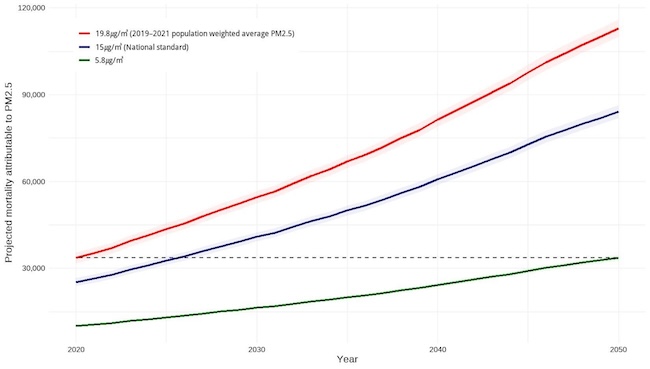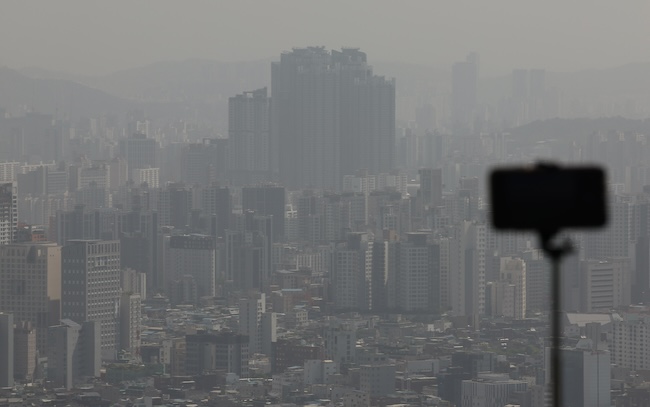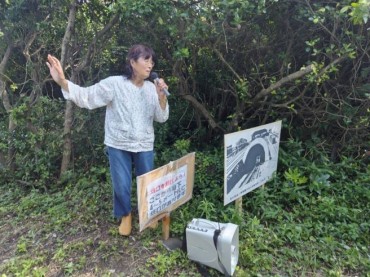POHANG, Jun. 5 (Korea Bizwire) – A new study has found that if current levels of fine dust pollution in South Korea persist, the number of premature deaths caused by fine dust exposure could triple by 2050 compared to present levels.
A research team led by professor Lee Hyung-joo from the Department of Environmental Engineering at Pohang University of Science and Technology (POSTECH) and graduate student Kim Na-rae projected mortality rates for 2050, taking into account fine dust concentrations and the pace of population aging.
Fine dust particles, with diameters of 2.5 micrometers or less, penetrate deep into the body and can cause various illnesses. The elderly are known to be more vulnerable to the effects of fine dust, posing a significant public health burden for rapidly aging societies like South Korea.
According to the study, South Korea’s average fine dust level from 2019 to 2021 was approximately 20 micrograms per cubic meter, exceeding both the annual air quality standard of 15 micrograms per cubic meter set by the Ministry of Environment and the World Health Organization’s recommended level of 5 micrograms per cubic meter.

The study forecasts around 110,000 premature deaths attributable to fine dust exposure in 2050. (Image courtesy of POSTECH)
Utilizing data from the Population and Housing Census and future population projections, the research team estimated that South Korea’s elderly population, currently at 16%, will rise to 40% by 2050.
Based on these findings, the team designed scenarios to predict mortality rates. If fine dust concentrations remain at the recent three-year average of 20 micrograms per cubic meter, the study forecasts around 110,000 premature deaths attributable to fine dust exposure in 2050 – nearly triple the 34,000 premature deaths recorded in 2020.
Even if fine dust levels are reduced to meet the Ministry of Environment’s annual air quality standard of 15 micrograms per cubic meter, the projected number of premature deaths in 2050 would still reach around 84,000.
The researchers concluded that to maintain the number of premature deaths from fine dust at 2020 levels by 2050, fine dust concentrations would need to be lowered to 6 micrograms per cubic meter – a far more stringent target than current policies.
This study highlights the need for significantly stronger measures to combat fine dust pollution and alleviate the public health burden, given the rapid increase in vulnerable elderly populations.
The research findings were recently published online in the journal Environmental Research, a leading international environmental science publication.
“As the rapidly aging population leads to a rise in vulnerable groups, fine dust is becoming a major public health threat, necessitating far more stringent fine dust reduction measures than current policies,” said Lee.
M. H. Lee (mhlee@koreabizwire.com)








